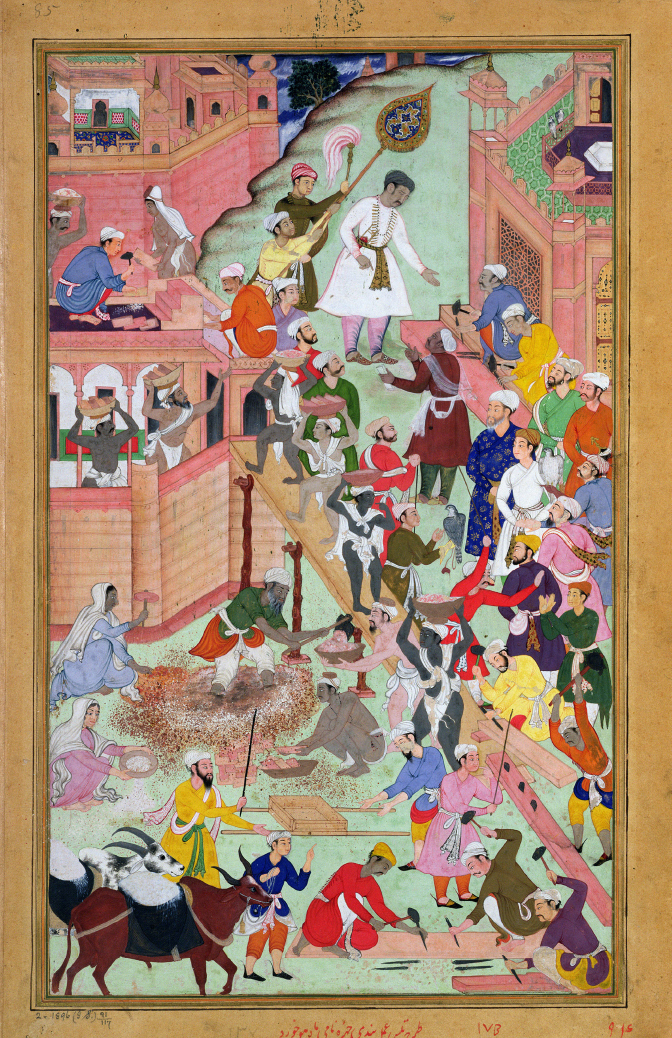VIEWPOINTS
| 17-4 | | A Capital Fit for an Emperor |
| TULSI THE ELDER AND MADHU THE YOUNGER, Akbar Inspects the Construction of Fatehpur-Sikri (ca. 1590–1598) |
In 1569, the Mughal emperor Akbar (r. 1556–

READING AND DISCUSSION QUESTIONS
- What does the image suggest about the Mughals’ knowledge of architecture and engineering?
- What were the sources of that knowledge?
- What kinds of workers contributed to the construction of the city? What importance should we attach to the fact that Akbar is shown in conversation with a humble artisan?